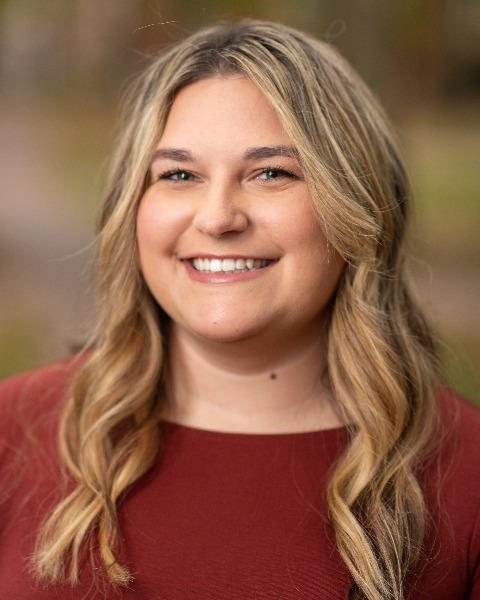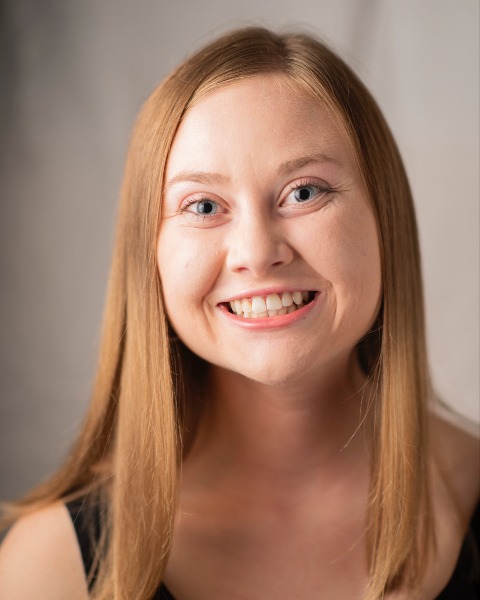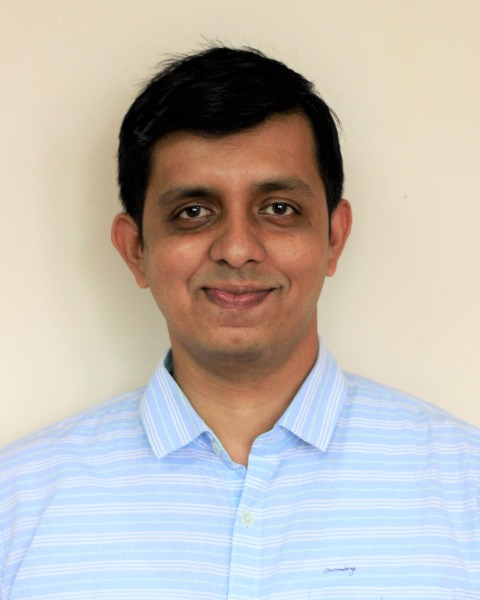Hearing Loss Prevention (HLP)
PP704 - Effect of Blood Group on High-Frequency Auditory Sensitivity and Cochlear Functioning
- KH
Katlin Hill, AuD Student
AuD Graduate Student
Ohio UniversityFinancial Disclosures: I do not have any relevant financial relationships with anything to disclose.
Non-Financial Disclosures: I do not have any relevant non-financial relationships with anything to disclose. 
Sophie Carleton, BS (she/her/hers)
Au.D. Graduate Student
Ohio University
Ohio University
Reedsville, OhioFinancial Disclosures: I do not have any relevant financial relationships with anything to disclose.
Non-Financial Disclosures: I do not have any relevant non-financial relationships with anything to disclose.- WK
Whitney L. Knipp (she/her/hers)
AuD Graduate Student
Ohio University
Athens, OhioFinancial Disclosures: I do not have any relevant financial relationships with anything to disclose.
Non-Financial Disclosures: I do not have any relevant non-financial relationships with anything to disclose. 
Grace K. Cymanski (she/her/hers)
Student
Oho University
Lancaster, OhioFinancial Disclosures: I do not have any relevant financial relationships with anything to disclose.
Non-Financial Disclosures: I do not have any relevant non-financial relationships with anything to disclose.- SW
Sophia Wu, BS (she/her/hers)
Student
Ohio UniversityFinancial Disclosures: I do not have any relevant financial relationships with anything to disclose.
Non-Financial Disclosures: I do not have any relevant non-financial relationships with anything to disclose. - jz
junhao zhang (he/him/his)
student
Ohio University
Athens, OhioFinancial Disclosures: I do not have any relevant financial relationships with anything to disclose.
Non-Financial Disclosures: I do not have any relevant non-financial relationships with anything to disclose. .jpg)
Nilesh J. Washnik, PhD (he/him/his)
Assistant Professor
Ohio University
Ohio University
Athens, OhioFinancial Disclosures: I do not have any relevant financial relationships with anything to disclose.
Non-Financial Disclosures: I do not have any relevant non-financial relationships with anything to disclose.
Prashanth Prabhu, PhD (he/him/his)
Assistant Professor
All India Institute of Speech and Hearing
All India Institute of Speech and Hearing
Mysuru, Karnataka, IndiaFinancial Disclosures: I do not have any relevant financial relationships with anything to disclose.
Non-Financial Disclosures: I do not have any relevant non-financial relationships with anything to disclose.
Lead Presenter(s)
Presenter(s)
Contributor(s)
Noise-induced hearing loss (NIHL) is the second most prevalent auditory deficit after age-related hearing loss or presbycusis (Sliwinska-Kowalska and Pawelczyk, 2013). There are many biological factors, such as age, gender, ethnicity, blood pressure, cholesterol level, etc., that increase an individual’s susceptibility to noise exposure. Recent studies on the young female population of Chinese and Indian ethnicity reported that individuals with the O blood group are more prone to develop NIHL (Chow et al., 2016; Prabhu e al., 2017). The present study aims to determine the possible influence of blood groups on cochlear functioning among young female population of European ethnicity.
Summary:
Noise-induced hearing loss (NIHL) is a major public health and social problem. Approximately 500 million individuals might be at risk of developing noise-induced hearing loss (NIHL) worldwide. It is known that the influence of noise exposure varies from individual to individual. Factors related to an individual’s susceptibility include skin pigmentation, blood pressure, cholesterol level, gender, age, smoking behavior, and ethnicity (Chen et al., 2017; Henderson et al., 1993). Otoacoustic emissions (OAE) and high-frequency audiometry are sensitive measures to test the susceptibility to NIHL. OAEs are low-level emissions that are generated in the cochlea and pass through the middle ear and into the external auditory canal.
Results of recent investigations suggest that the blood group also plays a vital role in susceptibility to noise exposure. Chow, McPherson, and Fuente (2016) studied the influence of blood groups on spontaneous OAEs (SOAEs), transient evoked OAEs (TEOAEs), and distortion-product OAEs among normal-hearing young females of Chinese ethnicity. They reported that participants with blood group O had the lowest prevalence of spontaneous OAEs and significantly reduced DPOAEs at certain frequencies compared to A, B, and AB blood groups. In another study on normal hearing young male participants of Chinese ethnicity, Chen, Chow, and McPherson (2018) also found lower OAE response amplitude in individuals with the O blood group when compared to individuals with other blood groups. Prabhu et al. (2018) reported similar findings among Indian adult females with normal hearing. All these three studies have been conducted in the Chinese and Indian populations. There is a need to investigate the role of the blood group in susceptibility to noise-induced hearing loss in individuals of European ethnicity. The purpose of this study is to determine the influence of blood group on extended high-frequency thresholds, DPOAEs, and speech perception in noise abilities in young female adults with European ethnicity and normal hearing.
Sixty normal-hearing females of European ethnicity aged between 18 to 30 years, with an equal number of participants in each of the A+, B+, AB+, and O + blood groups, will be recruited. Extended high-frequency audiometry, high frequency DPOAE, and Quick Speech in Noise (QuickSIN) test will be administered on each participant. The result of this study is expected to show poorer extended high-frequency hearing thresholds, reduced DPOAE amplitude, and poorer speech recognition in noise performance in individuals with the O+ve blood group when compared to individuals with other blood groups. The findings of this study will be helpful in better understanding of blood group as a factor that increases an individual’s susceptibility to the effects of noise exposure. Early identification of individuals with higher susceptibility can pave the way for establishing better preventive strategies for NIHL.
Learning Objectives:
- Upon completion of this session, the participant will be able to describe influence of blood group on individual susceptibility to noise-induced hearing loss.
